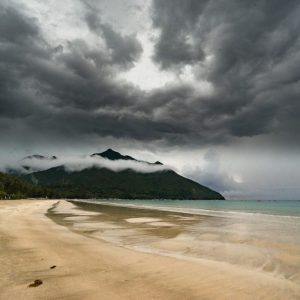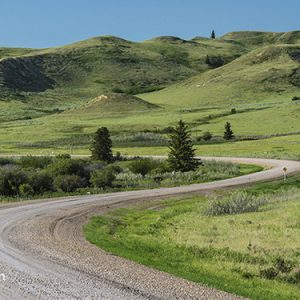
Southern Backroads: A Scenic Route Through History
The South. A tapestry woven with threads of cotton fields, Spanish moss draped oaks, and the echoes of centuries past. While the interstate highways offer speed, it’s the winding, less-traveled backroads that truly reveal the heart and soul of this captivating region. These aren’t just routes; they’re living history lessons, scenic masterpieces, and invitations to slow down and savor the journey.
Beyond the Asphalt Ribbon: Discovering the Soul of the South
Forget the GPS; embrace the unexpected. Southern backroads are a journey of discovery, where a sudden bend might unveil a quaint antebellum home, a vibrant roadside market brimming with local produce, or a ghost town whispering tales of forgotten eras. Each mile is a postcard, each town a chapter in a rich and complex narrative. This isn’t about reaching a destination; it’s about embracing the journey itself.
A Tapestry of Time: Historical Highlights Along the Way
The Southern backroads offer unparalleled access to historical sites often bypassed by the faster, more direct routes. Imagine yourself tracing the footsteps of pioneers, soldiers, and civil rights activists, each curve in the road revealing a new layer of the region’s rich past.
| Location | Historical Significance | Scenic Highlight |
|---|---|---|
| Natchez Trace Parkway | Historic trade route, Civil War battle sites | Rolling hills, ancient forests |
| Blue Ridge Parkway | Stunning mountain views, Appalachian culture | Breathtaking vistas, cascading waterfalls |
| Charleston, SC | Historic architecture, antebellum plantations | Waterfront charm, cobblestone streets |
| Savannah, SC | Colonial history, haunted squares | Spanish moss-draped oaks, charming squares |
More Than Just History: A Feast for the Senses
The Southern backroads aren’t just about history; they’re a feast for all the senses. The air is thick with the scent of honeysuckle and pine, the taste buds tantalized by the flavors of authentic Southern cuisine at roadside diners and family-run restaurants. The music, whether it’s bluegrass drifting from a nearby porch or gospel echoing from a historic church, adds an intangible layer of charm.
Embracing the Unexpected: The Charm of the Unplanned
Allow yourself to get lost. Embrace the unexpected detours. A sudden downpour might lead you to a cozy roadside cafe, a broken-down fence might reveal a hidden path through a blooming wildflower meadow. The beauty of the Southern backroads lies in their spontaneity, their ability to surprise and delight at every turn.
Practical Tips for Your Backroads Adventure:
- Plan your route loosely: Allow for flexibility and spontaneity.
- Check road conditions: Some backroads might be unpaved or poorly maintained.
- Pack essentials: Water, snacks, a map (or GPS backup), and a fully charged phone.
- Respect local communities: Be mindful of private property and local customs.
- Embrace the slow pace: Enjoy the journey, not just the destination.
A Journey of Discovery:
A journey along the Southern backroads is more than just a road trip; it’s a voyage through time, a celebration of nature’s beauty, and an immersion in a culture rich in history, hospitality, and charm. So, leave the fast lane behind, and discover the hidden heart of the South. The memories you create will last a lifetime.
:max_bytes(150000):strip_icc()/catskills-drive-59bf0d4968e1a2001444db0a.jpg)
Additional Information
Southern Backroads: A Deeper Dive into Scenic Routes and Historical Significance
While a surface-level exploration of Southern backroads highlights picturesque landscapes and charming towns, a deeper analysis reveals a complex interplay of historical forces, economic realities, and cultural preservation challenges that shape these routes and the communities they traverse. This expanded analysis delves into these interwoven factors, providing a richer understanding of the significance of Southern backroads.
1. Historical Significance beyond the Tourist Gaze:
The “scenic” aspect often overshadows the historical weight embedded in these routes. Many backroads represent remnants of older transportation networks predating the interstate highway system. These routes:
- Mirrored Settlement Patterns: Their alignment often follows earlier migration patterns, reflecting the movement of populations – from colonial settlements along rivers and coastlines to westward expansion during the 19th century. Analyzing old land grant maps alongside current backroad maps can reveal these historical connections. For example, the Natchez Trace Parkway, while now a scenic drive, originally served as a vital Native American and later pioneer trade route, showcasing the layers of history imprinted on the landscape.
- Shaped Economic Development: Backroads were integral to the economic life of the region. They facilitated the transportation of agricultural goods (cotton, tobacco, etc.) to markets, impacting the development of plantation economies and shaping the rural landscape. Studying county archives and agricultural census data can illuminate this historical economic influence. For example, the decline of tobacco farming in certain areas might directly correlate with the deterioration of related backroads.
- Reflect Social and Racial Dynamics: These roads were also witnesses to and participants in the complexities of Southern history, including slavery, the Civil War, and the Jim Crow era. Analyzing historical markers, oral histories, and local narratives can reveal the often-unseen stories embedded within the seemingly idyllic landscapes. The routes themselves may have been deliberately planned or organically developed to reflect the social hierarchy of the time.
2. Economic Impact and Preservation Challenges:
Preserving these backroads presents both opportunities and challenges:
- Tourism and Economic Development: Well-maintained backroads can attract tourism, boosting local economies through accommodation, food services, and artisan crafts. However, uncontrolled tourism can lead to environmental damage and the homogenization of local culture, replacing authenticity with commercially driven experiences. Case studies of successful and unsuccessful tourism management in similar rural areas can offer valuable insights.
- Infrastructure Maintenance and Funding: Maintaining these often-rural roads requires significant investment, often exceeding the resources of local governments. Securing funding through a combination of state, federal, and private sources is crucial. An analysis of funding models employed in other regions facing similar challenges would be beneficial.
- Land Use Conflicts: Balancing preservation efforts with the needs of private landowners and agricultural activities presents a significant challenge. Careful land-use planning and community engagement are crucial to ensure the sustainable preservation of both the roads and the surrounding environment.
3. Cultural Preservation and Storytelling:
The backroads are not simply routes; they are carriers of cultural narratives:
- Oral Histories and Local Narratives: Gathering and preserving oral histories from residents along these routes is critical to capturing the diverse perspectives and experiences associated with these places. This human element adds depth and authenticity that transcends the purely visual aspects of the journey.
- Architectural Heritage: The buildings and structures found along these roads – from antebellum mansions to vernacular farmhouses – reflect the region’s architectural history and should be documented and preserved. This involves both physical preservation and the creation of accessible historical records.
- Community Involvement: Engaging local communities in preservation efforts ensures that projects reflect the desires and needs of the people who live and work along these backroads, guaranteeing authenticity and long-term sustainability.
In conclusion, a comprehensive understanding of Southern backroads requires moving beyond simple descriptions of scenic beauty. A deeper analytical approach, integrating historical research, economic analysis, and cultural preservation strategies, is essential to unlock the full potential of these routes and ensure their sustainable future, allowing both residents and visitors to appreciate their profound historical and cultural significance.






